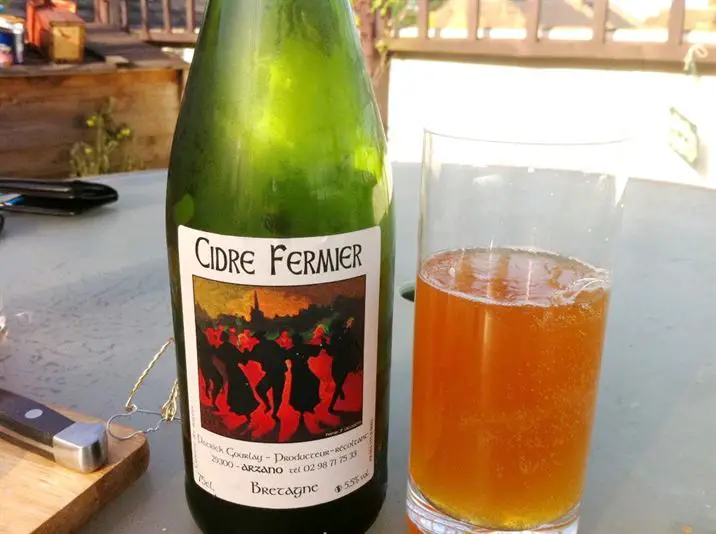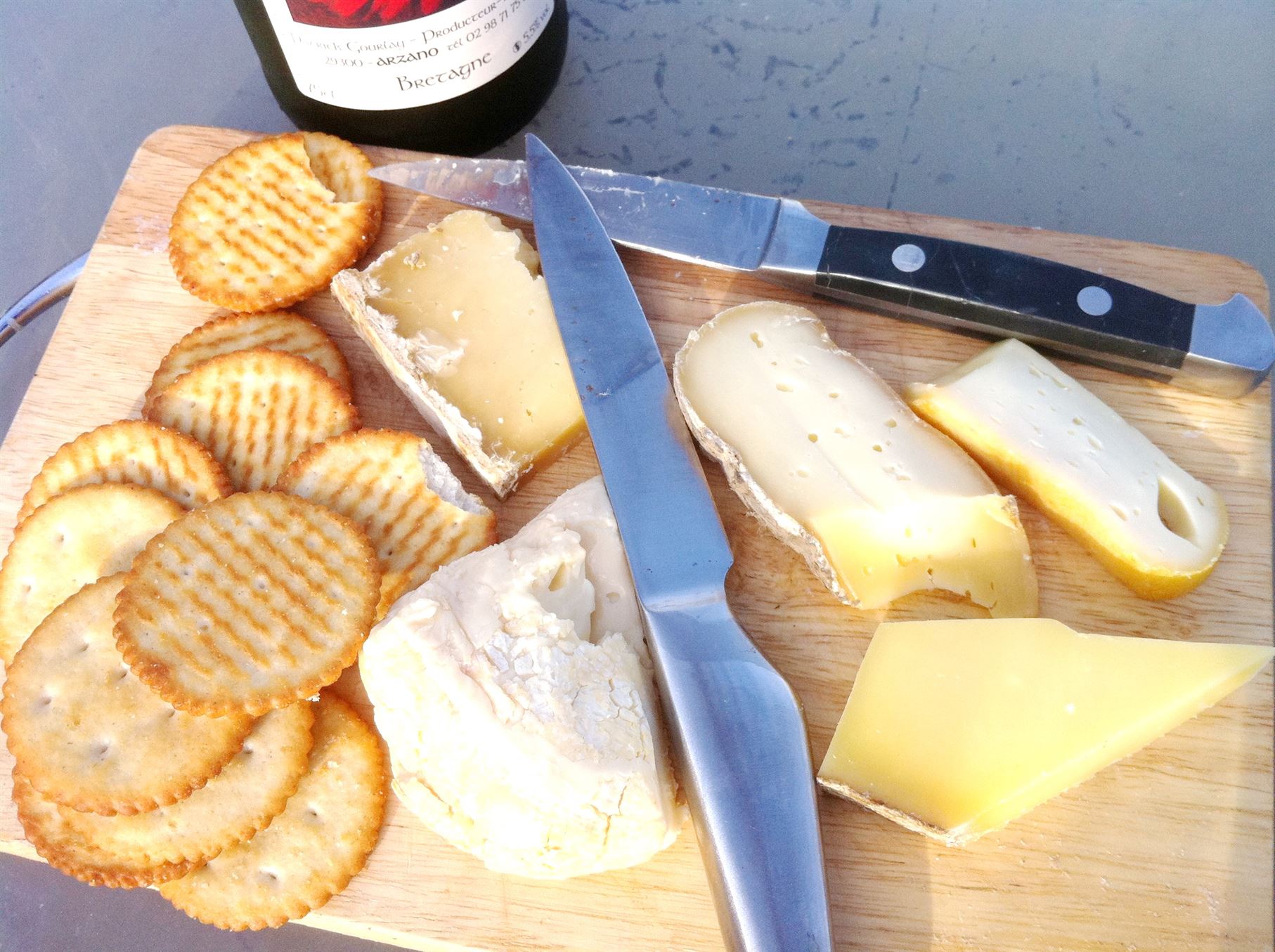While on holiday in France recently, I came home with some fantastic cheeses. It was a bit of an effort identifying each one because the seller at the market in Trinite sur Mer didnt speak English and my French is pidgin poor. But I think we got there in the end.
These are just a selection of them, enjoyed with a glass of Brittany Cider on our roof terrace in the glorious (and long overdue) September sunshine.

Top left: Le Salers
A semi-hard cheese from the volcanic region in the mountains of Auvergne, central France. It is a pressed, uncooked cheese made from Salers cows milk. It is similar to Cantal cheese which is produced from the same cows milk when they are fed on hay during the remaining months of the year. It is smooth and silky on the tongue, with a slightly sour taste.
Bottom left: Deaville
This modern French cheese combines attributes from two of Normandies most famous washed-rind cheeses: Pont lEveque and Livarot. In spite of that, Deaville still has its own unique character. It has a soft, sticky texture with a earthy, milky flavour.
Centre: Tommes des Bauges
The milk for this semi-soft cheese comes from the cows that graze in Alpine meadows of wildflowers. It is made with full milk and is lightly pressed to give it a simple texture with tiny holes. The rind becomes thick, grey and wrinkled with age.
Top right: Cure Nantais
This cheese is believed to have been introduced to the Pays de la Loire region by a Vendeen monk who was enduring the food shortage of the French Revolution. Now it is produced by a diary that respects the traditional methods of making it. Taste: Strong-tasting with a soft and slightly elastic golden paste, featuring a few small holes.
Bottom right: Comte.
Aged Comte is one of my all-time favourite cheeses, only being pipped to the post by some of the UKs greatest Cheddars. This ancident cheese has been made in small village-based cooperative dairies or fruitiere for 800 years. It takes the daily yield of 30 cows to make one Comte wheel and the resulting cheese depending on which fruitiere has produced it ranges in profile from melted butter, milk chocolate, hazelnuts and fudge to aromas of toast, plum jam, leather, pepper and dark chocolate. Eat at any time of day, ideally served with a chilled glass of Chardonnay, Chenin Blanc or Viognier.

¢ Tasting notes taken from The Finest Selection World Cheese Book by Juliet Habutt (a fantastic birthday present from my e-dam good pal, Dan even though I camembert him. LOLOL!)
